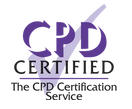
Learn the basics of
Coding & Technology
Your journey as a technology enthusiast begins here. In this course we explore innovative technologies of the 21st century and its implications in industry. As a practical component, you will also be introduced to the basics of front-end web development using code. This course explores fundamental technologies used in modern business and society.
60,638
Graduates
All levels
Certified

Course details
MODULE 1
Diploma in Coding & Technology
MODULE 1
Diploma in Coding & Technology
1.Computer hardware and software
This lesson introduces computer hardware and software, we learn about the evolution of technology and industry tech giants, as well as peripherals, system software, application software and productivity software. We will explore the fourth industrial revolution, digital society, artificial intelligence (AI) and immersive technologies.
2.Ubiquitous Computing: Mobile and Web Development
In this lesson you will learn about mobile technologies, smartphone devices, operating systems, software development for smartphones and synchronous versus asynchronous programming. We will further explore web technologies, the origin of the internet, how it works, client server architecture and web programming languages. You will also learn about networks and distributed processing, network types, basic processing alternatives, network topologies and intranets and extranets.
3.Immersive Technologies: Augmented Reality (AR) and Virtual Reality (VR)
You will learn about immersive technologies in this class, an overview of immersive technologies, immersion and suspension of disbelief, trends in immersive technologies and hardware and software. You will also learn how to distinguish between augmented reality (AR) and virtual reality (VR), what each of these is, the various misconceptions around them and how to choose between these two solutions. We will also look at examples of immersive technologies in practice within business and education.
4.Databases
In this lesson you will learn about data versus information, processing data, organising data and data as a commodity, you will also learn about relational databases, the structure of a database, tables, rows and columns, entity relationship diagrams and identifying relationships. This lesson also covers database management, defining what it is, the role of a database administrator, tools for managing databases and database programming languages (SQL).
5.Big Data
This lesson will look at traditional data versus big data, differentiating between the two, processing and storing big data, as well as, the 3 Vs of big data. You will learn about tools for big data such as software applications to manage big data, data visualisation tools, business intelligence and machine learning in big data. The application of big data is also important, this lesson also covers how to use big data to formulate organisational strategies, big data in social media, e-commerce and healthcare.
6.Cloud Computing
This lesson will teach you about the characteristics of cloud computing and what it is, we will explore cloud computing versus traditional systems as well as the advantages and disadvantages of cloud computing. You will also learn about cloud computing architecture and the applications of cloud computing for business use, personal use and industry cloud providers.
7.Internet of Things (IoT)
This lesson will explore the pervasive nature of interrelated computing devices to illustrate the architecture of how smart devices communicate. You will learn what the Internet of Things (IoT) includes, how interconnected devices have evolved from sensors, to automation and IoT and big data. We will cover IoT architectures, including gathering data, pre-processing, storing data from IoT devices and application layers. We will further delve into IoT applications, IoT in manufacturing, IoT in business intelligence and data driven strategies.
8.Artificial Intelligence (AI)
In this lesson you will learn about the evolution of artificial intelligence (AI), as well as what intelligent agents are , artificial general intelligence and we will debunk some common AI myths. You will also learn about the elements of AI, machine learning in AI, deep learning in AI, artificial neural networks, probabilistic reasoning, as well as modern AI applications, such as AI in the automotive industry, AI in healthcare and AI in tech platforms.
MODULE 2
Intermediate in Coding & Technology
MODULE 2
Intermediate in Coding & Technology
1.Software Development Methodologies
In this lesson, we will explore the importance of the software development life-cycle (SDLC) and why it is important to use this framework to successfully deploy and manage software, this includes small or large software packages. We also discuss the various phases in the SDLC in the context of popular agile methodologies and how they can be used in the software development process.
2.Introduction to Prototyping
In this coding class, you will be introduced to the concept of prototyping. Prototyping reinforces the rapid application development process, thus enhancing the success of meeting user requirements in the software development life cycle. We will also cover important constructs such as stakeholder involvement, user acceptance, user experience, and the iterative design approach.
3.Introduction to Justinmind Part 1
In this lesson we will install Justinmind, a cross-platform prototyping tool. We will navigate through the software to better understand the workflow and develop our first basic prototype using UI elements, conditional logic and variables.
4.Introduction to Justinmind Part 2
5.Tools for IT Project Management Part 1
In this lesson, we will incorporate project management concepts to better understand how IT projects are managed on a small and large scale. We will discuss the project management environment, and the knowledge areas and constraints. As we progress, we will cover the importance of project scope management and methodologies.
6.Tools for IT Project Management - Part 2
7.Tools for IT Project Management - Part 3
In this online coding class we will have a look at transforming our Scrum board into an automated Gantt Chart. We will also have a detailed look at the importance of using a Gantt chart to manage time as a resource to ensure project expectations are met. To wrap things up, we will integrate our Trello environment with Team Gantt, a powerful plugin that transforms the way we use it as a project management tool.
8.E-commerce
In our final class of this coding and technology module, we will explore e-commerce in detail. First we delve into an overview of e-commerce perspectives and categories. Moving forward we discuss revenue models and how to create an effective business presence. Furthermore we cover the various marketing approaches that are ideal for e-commerce businesses. Lastly, we take a look at using market segmentation to profile target markets and then we wrap things up by assessing the role of online customer behavior.
MODULE 3
Advanced Diploma in Coding & Technology
MODULE 3
Advanced Diploma in Coding & Technology
1.Introduction to the web
In this lesson, we briefly discuss the architecture of the web. This allows you to solidify your understanding of the client/server architecture before we begin scripting. First we delve into better understand the internet and the world wide web, then we move onto networking basics, followed by a very important topic, web server basics. Lastly, we wrap this session up with languages of the web, which includes HTML and CSS.
2.Introduction to HTML
In this lesson, we jump right into web development we learn more about the HTML markup language. We will install the required software so that we can begin developing our first web page using HTML. So stay tuned, because it’s going to be an exciting lesson!
3.HTML elements
In this class on coding we review the important and common HTML elements used in web development. Here we will focus on text level elements, grouping elements and provide our website with a more coherent structure and flow by implementing very basic navigation. We will also explore the importance of making comments in our code.
4.HTML attributes
In this lesson we have a look at attributes. Attributes are a core function of any HTML. We use attributes to control the behavior of elements. Attributes also act as a modifier of an HTML element type and thus provides us with the ability to manipulate how an element functions. Furthermore, we also explore the use of tables and multimedia files in HTML5.
5.HTML inputs
In this lesson we delve right into HTML inputs and forms. These elements allow us to capture data from the user to be processed by either a database or server. We can also use an array of input types to make websites more dynamic and interactive. By the end of this session, we will wrap everything up with all that we have learned so far in HTML by completing a practical session.
6.Introduction to CSS
7.Advanced CSS
In this coding lesson we will discuss the CSS box model and learn all about how we can use padding, margin and borders to style our elements. This will greatly improve the layout and dimensions of our elements. We will also learn all about positioning our styled elements in our viewport and working with animations.
8.HTML and CSS project
In our final online lesson of this coding and technology module, we’ll be gearing towards bringing everything together. This includes everything we have covered in CSS and HTML. We’ll develop a single page application as part of this major project and we’ll use animations, positioning, padding and margins – you name it! The goal is to develop a basic front-end web page for an e-commerce grocery store. So put on you creativity hats because this is going to be an exciting project!
MODULE 4
Proficient in Coding & Technology
MODULE 4
Proficient in Coding & Technology
1.Relational Database Management Systems - Part-1
2.Relational Database Management Systems - Part-2
3.Advanced SQL - Part-1
4.Advanced SQL - Part-2
5.Databases & Security - Part-1
6.Databases & Security - Part-2
7.Server Setup - Part-1
8.Server Setup - Part-2
